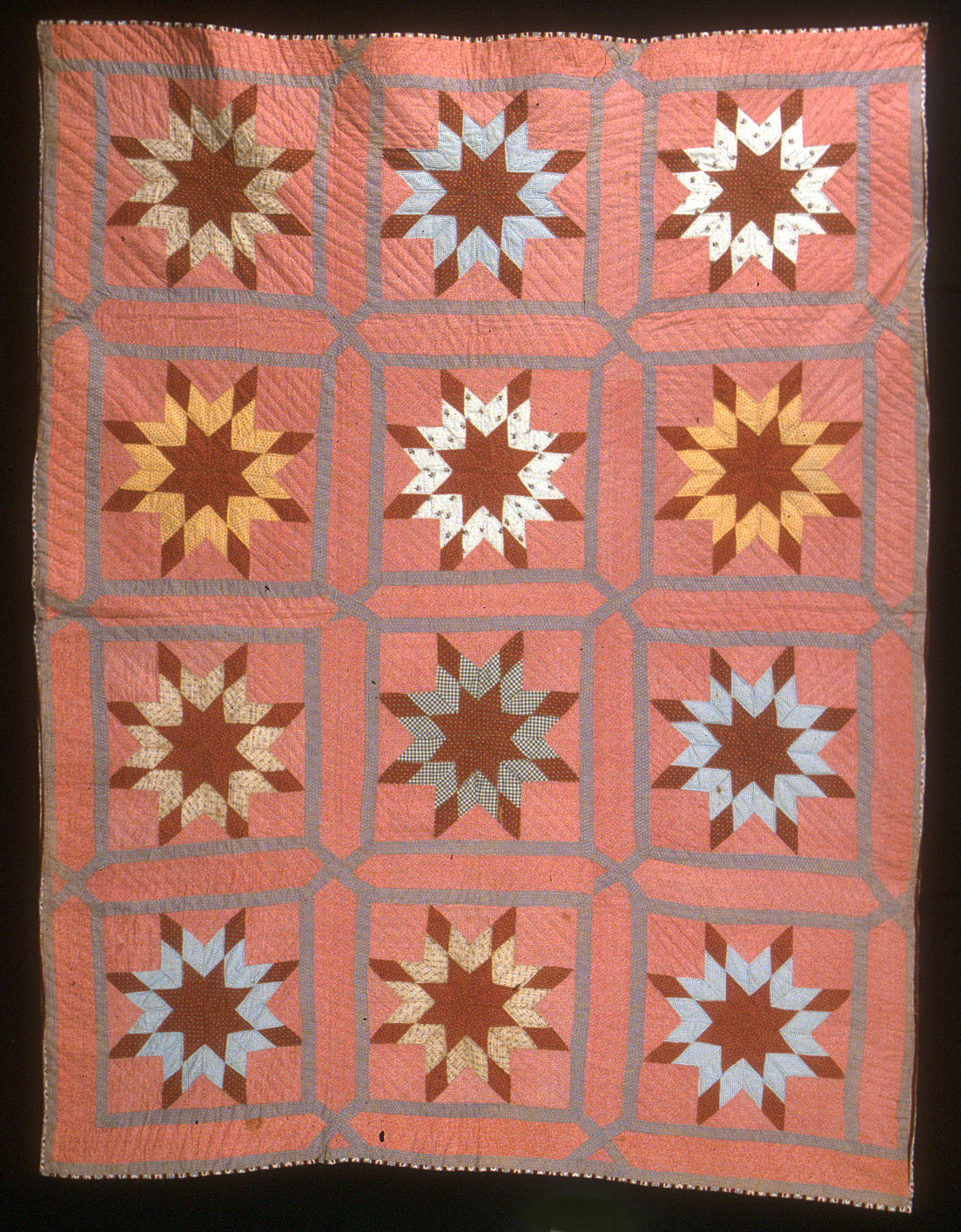Collections by Name | Collections by Region
Durkee-Blakeslee-Quarton-Hoard Family Quilt Collection
"If you have a cat, you do not use quilts," firmly states Betty Quarton Hoard. Concerned that family pets might damage a collection of pristine family quilts prompted Betty to donate seventeen quilts made by her grandmother, Martha L. Durkee Blakeslee and great-grandmother, Mary Elizabeth Beardslee Durkee to the Michigan State University Museum.
The Durkee-Blakeslee-Quarton-Hoard Collection contains a strong representation of quilt styles and patterns popular during the last third of the nineteenth century. The majority of the quilts are classic pieced patterns. Prominent in the quilts of Mary Durkee are coppery madder prints in browns and dark oranges, chocolates, double pinks, and purples. The prints tend to feature stripes, paisleys, and other geometric designs. The later quilts by Martha Blakeslee include many shirtings of reds, clarets, indigos, cadet blues and blacks popular at the turn of the century. Colored prints with a white resist design were also commonly used.
Oakland County, Michigan has been home to members of Betty's family, since 1823 when her forebear Wilkes Durkee moved from Cayuga County, New York to the town of Franklin. Betty's grandfather, Frank Blakeslee, owned a dry goods store in Birmingham, the city in which Betty continues to reside. Betty recalls that the boxes of fabric, lace, and other notions that were available from the family's dry goods store always provided her with scraps from which to make doll clothes. Ownership of the store undoubtedly contributed to the eclectic variety of fabric dating to the era that are found throughout the family's quilts. Betty also remembers a quilt frame that, one winter, was set up so frequently in the dining room that the family could not fit around the table to eat.
Betty's own quilting began with a detailed redwork piece created with her sister, Winnie. The project commenced when Betty was about fourteen, an age she thought was too old for this task and thus only completed around four of the blocks. Winnie finished the remainder. The motifs embroidered on blocks set with a red sashing include numerous depictions of nursery rhymes and fairy tales. Today Betty proudly displays the quilt in her home.
Exposure to the quilts pieced by her older relatives was not a prominent part of Betty's upbringing. As decorative tastes changed, the quilts were not used in her mother's household. She always knew there were quilts in the "great trunk in the attic...ever since I could remember....I had leafed through them once in a while...I flipped the material and said it's awfully old-fashioned....And then I finally did find one that I used as a tablecloth." Betty really began to appreciate the quilts in the early 1990s when a friend wanted to see them.
Both the Durkee-Blakeslee-Quarton-Hoard and the Clarke collections are valuable because of the good condition in which the families kept the quilts and the related materials that were donated along with the textiles. Preserved now within a museum dedicated to research and education, it is hoped that these material cultural collections will be used to not only understand the lives of Detroit area families but also to contribute to many regional, women's and textile studies.
[excerpt from Marsha MacDowell, ed., Great Lakes, Great Quilts. Concord, California: C&T Publishing, 2001]
Donors and Fieldworkers
Bonnie Stecker, Betty Quarton Hoard

Bursting Star with Garden Maze, Mary Elizabeth Beardslee Durkee, Birmingham, Michigan, c. 1870





